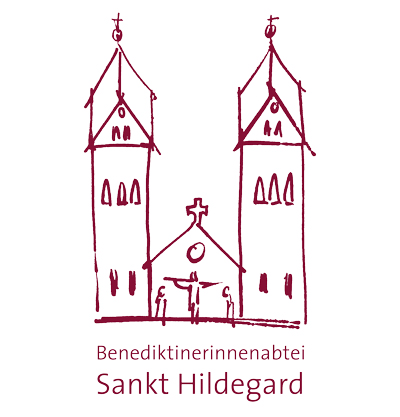The nave has four areas of wall paintings: both side walls, above the choir arch and the back wall. The space above the choir arch is dominated by the image of the City of God, by the walls of the heavenly Jerusalem, bordered by two towers each on both sides. The inscription in glowing ochre on sapphire-blue ground points to the basic idea of all the paintings and the theme of the murals in the church: „Tabernaculum Dei cum hominibus“, „the house of God amongst men“ (Rev 21:3).
The thought expressed here, God living amongst men, originates in the Old Testament. The place where the Israelites, the people of God, assembled – and therefore the very place of encountering God – was at the time of their wandering through the desert the „tent of meeting“, later the temple at Jerusalem. There, in „his city“ and „his house“, the Israelites celebrated and experienced God’s helpful presence. Symbolically, this Old Testament reference is also depicted on the back wall of the church over the great arched window above the portal. In the vision on Mount Sinai, God shows Moses the plan for his dwelling amongst men: „Inspice et fac secundum exemplar, quod tibi in monte monstratum est.“ (And see that you make them after the pattern for them which is shown you on the mountain.) (Ex 25:40). Moses saw the heavenly Jerusalem, which is depicted above the choir archway, on the plan. Ecclesiastical architecture in the Old and New Covenant is based on it.
In the same way, Jesus and the early Christian community regarded the temple as sacred and the „House of the Father“. But a new dimension was now added: Jesus himself through his death and resurrection became the final and universal place of encountering God and of God’s presence. Thus the Gospel speaks of his body as the true temple, and this is developed further in Pauline texts with the mystical body of the church, whose head is Christ. All the faithful therefore make up „the holy temple of the living God“. So the real place of his presence is the church as Christ’s original sacrament, as God’s people of the New Covenant. They gather to hear the Word of God, to pray and to come to the Lord’s Supper and thus turn the church building itself into the place of encountering God. This closes the circle. „Inhabitatio Dei cum hominibus“ (The in-dwelling of God with man) therefore becomes the symbol of the very history of God with man.
On either side of the choir arch we find St Benedict and his sister St Scholastica, the founders of the Order of St Benedict. St Benedict has his place at the northern (left) side of the arch and at the same time leads a procession of holy men in the upper area of the northern side wall. As a counter balance, the procession of holy women ends with St Scholastica. Both processions are decorated with palms, a symbol of life, which continues to be felt through these men and women into our present day. Beneath the founders of the order one can see on one side St Peter and on the other Moses with the Tables of the Law. Peter and Moses in turn complete a row each of figures on the side walls of the church: with Moses ends the row of the four great prophets – Daniel, Ezekiel, Isaiah and Jeremiah; with Peter ends the row of the four evangelists – Matthew, Mark, Luke and John.
